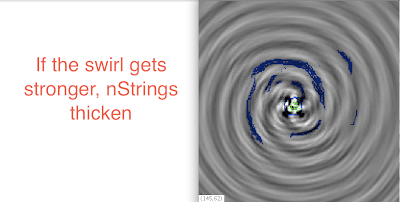Printers manufacture books,newspapers, newsletters and posters.
It was about Print and Distribute and Desktop Publishing
Now, it is about Distribute and Print and Printernet Publishing.
It was always about Print's ability to fix information in time and make it available in human space.
Print is a persistent neme that triggers cascades of emotion and cognition.
Wednesday, April 10, 2013
RTE.4.10 Whorls to nStrings to nTubes to New Patterns
+Dibyendu De "A point is a neme. Line is a nString. A number of unconnected lines having the same sense of direction can form an nTube. "
 |
| RTE.4.10.1 |
 |
| RTE.4.10.2 |
 |
| RTE.4.10.3 |
 |
| RTE.4.10.4 |
Tuesday, April 9, 2013
RTE.4.9.1 A Field of Nemes and Holons
In G+ this morning an interesting question was asked about Nemetics.
The pictures below are an attempt to answer the question.
Can nemetics be translated using nodes, edges and holons?
(A holon (Greek: ὅλον, holon neuter form of ὅλος, holos "whole") is something that is simultaneously a whole and a part.
The pictures below are an attempt to answer the question.
 |
| Figure 1. |
 |
| Figure 2. Zooming In |
 |
| Figure 3. Zooming In |
RTE 4.9 Visualizing Complexity in 3D
Yesterday in the middle of a twitter conversation Nues Lorenzo in Barcelona tweeted:
Both the comments and Dibyende's work present a challenge for RTE research. My conjecture is we can start to solve the problem with various views of the same underlying complexity. As part of the research agenda we can develop a three plane model so we can clarify the patterns of "experimenting, discovering, contingency, connectivism, crosscurricular transversality"
@NewsNeus Problem: how to transmit the third dimension in education.
Traditionally, school has offered coherent learning: lists, facts But now school should be an scenario for experimenting, discovering, contingency, connectivism, crosscurricular transversalityA similar problem of seeing in 3D is raised by +Dibyendu De in his work at The International Nemetics Institute. I recommend a slow read of his description of his PLS3D approach at MOVING BETWEEN STATES OF AWARENESS..
Both the comments and Dibyende's work present a challenge for RTE research. My conjecture is we can start to solve the problem with various views of the same underlying complexity. As part of the research agenda we can develop a three plane model so we can clarify the patterns of "experimenting, discovering, contingency, connectivism, crosscurricular transversality"
Fig. 1
Fig. 2 View from Above
Fig. 3 View from Below
Monday, April 8, 2013
RTE 4.8 Marketing, Education and Leadership in Complexity
A recent McKinsey report says
Although collaboration is at the heart of modern business processes,
most companies are still in the dark about how to manage it.
In the industrial age, organizations, marketing and education looked like this:
 |
| Figure 1 |
which plays out like this
 |
| Figure 2 |
With Web 2.0 the market, organizations, education looked like this.
 |
| Figure 3 |
which plays out like this
 |
| Figure 4 |
With Web 3.0 the market, organizations and education plays out like this.
 |
| Figure 5 |
Sunday, April 7, 2013
RTE 4.7 Loose and/or Tight Neme Exchange ( Communication )
In the comment thread in a post about P&G , +Dibyendu De said
I think their system of ‘knowing the customer’ triggers innovation. The interesting thing to notice is the dialectics they are engaged in – the ‘loose-tight’ phenomenon as described by Tom Peters and Bob Waterman in their 1982 book, ‘In Search of Excellence’.
What is so admirable about them is their combination of impeccable operations (tight) with flexible innovation (loose) to bring out a formidable winner.
Which inspired the exploration below.
Tight nemes
Tight nemes followed by Loose nemes
Tight followed by loose followed by tight
Tight followed by Loose followed by Tight stabilizes at
Subscribe to:
Comments (Atom)



